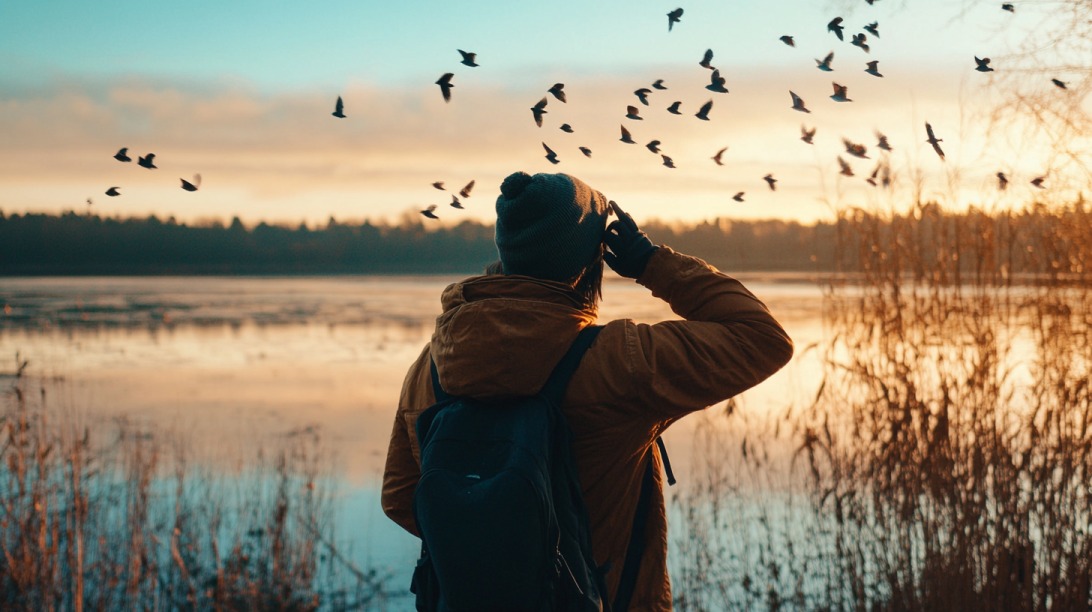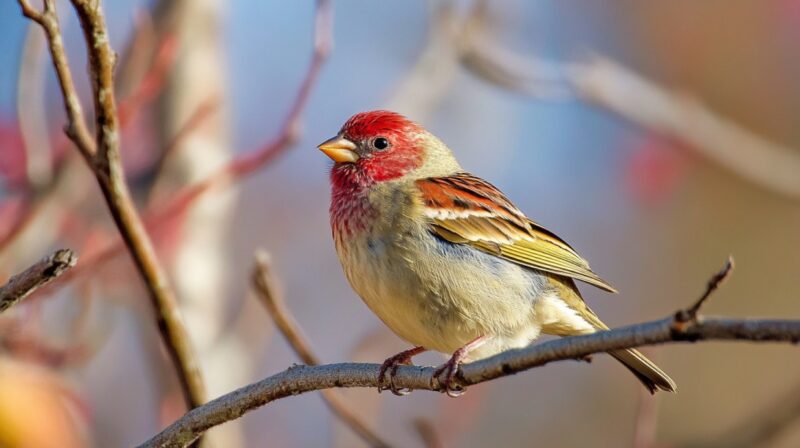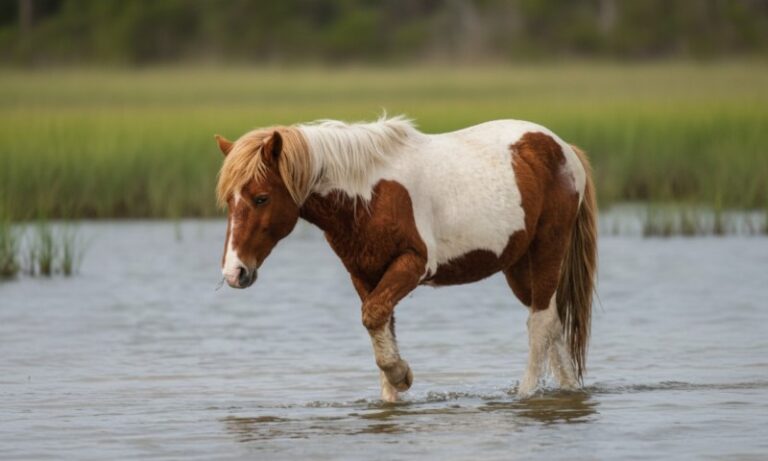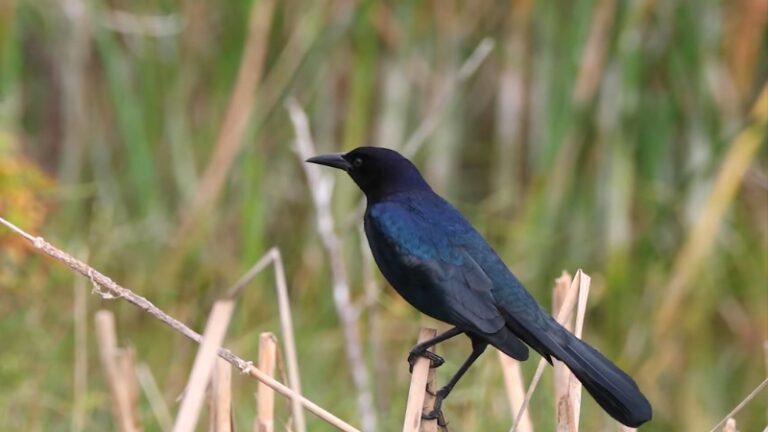Birdwatching in Coastal Virginia offers a spectacular glimpse into avian life, with more than 400 species recorded each year.
Positioned along the Atlantic Flyway, the region serves as a vital stopover for migrating birds during spring and fall.
Proximity to beaches, marshes, and maritime forests provides a wide range of habitats ideal for both seasoned and novice birders.
Seasonal visits offer varied sightings, raptors in the fall, warblers in spring, and waterfowl in winter.
Table of Contents
Toggle1. Kiptopeke State Park
- Location: Eastern Shore, Chesapeake Bay
- Key Highlights: Raptor migration hub, Coastal Virginia Wildlife Observatory, offshore concrete ships with nesting birds
- Birds to Watch: Hawks, falcons, ospreys, brown pelicans, great blue herons, warblers, cormorants, peregrine falcons
Kiptopeke State Park sits on Virginia’s Eastern Shore, bordered by the calm, bird-rich waters of the Chesapeake Bay. A prime location for migration observation, the park becomes a dynamic watchpoint each autumn as thousands of raptors glide across the skies.
Hawks, falcons, ospreys, and even the occasional eagle pass overhead, funneling through the region in spectacular numbers. Birders with binoculars fixed on the horizon witness an aerial ballet of survival and instinct.
In the heart of the park lies the Coastal Virginia Wildlife Observatory (CVWO), a hub for avian research and education. Scientists and volunteers work at banding stations, gathering data on migratory birds while sharing insight with curious visitors. Educational programs offer a closer look at how migration is monitored and why it matters.
Trails wind through coastal woodlands and open dunes, offering plenty of vantage points for spotting great blue herons stalking the shoreline and flashes of warblers darting through the underbrush. Spring and fall migrations add bursts of color and activity to the already vibrant scene.
Early morning hours offer quieter trails and the best bird activity, especially along the Baywoods Trail and Raptor Loop.
Photographers often set up along bluffs overlooking the bay, hoping to capture the graceful flight of a peregrine falcon or the slow, deliberate flap of a pelican.
Families can enjoy a full day in the park thanks to picnic areas, accessible trails, and beach access, making it more than just a haven for seasoned birders.
2. Back Bay National Wildlife Refuge

- Location: Southern Virginia Beach
- Key Highlights: Beach to marsh transition, crucial migration route, multiple habitat zones
- Birds to Watch: Snow geese, tundra swans, herons, red-winged blackbirds, seasonal songbirds, raptors
- Recommended Trails: Seaside Trail, Boardwalk, East/West Dikes
In southern Virginia Beach, Back Bay National Wildlife Refuge stretches across a vibrant mix of coastal habitats that shift dramatically in a short span. Sandy barrier beaches give way to freshwater marshes, which then transition into dense forested uplands.
Winter transforms the refuge into a spectacular gathering ground for migratory birds. Snow geese fill the skies with graceful formations, while tundra swans glide across quiet waters. Along the reed-lined edges of the marshes, red-winged blackbirds offer their unmistakable calls, adding rhythm to the stillness.
Herons stalk slowly along muddy edges, waiting for a flash of movement beneath the surface.
In spring and fall, waves of songbirds and shorebirds pass through, driven by seasonal migration. Their vibrant plumage and active feeding behaviors attract birders to observation decks and quiet trails. Summer offers glimpses of resident species raising their young and defending territory in the dense brush or along the open shores.
Several trails enhance access to these habitats. The Seaside Trail begins near the visitor center and leads to sweeping views of the ocean and marsh. The East and West Dikes offer long, flat paths ideal for spotting a wide range of species across open wetlands.
A well-maintained boardwalk provides up-close viewing opportunities without disturbing sensitive areas.
3. False Cape State Park
- Location: South of Back Bay National Wildlife Refuge
- Key Highlights: Remote access, pristine habitat, foot and bike entry
- Birds to Watch: Piping plovers, terns, warblers, shorebirds, sanderlings, dunlins, least terns
False Cape State Park, located south of Back Bay National Wildlife Refuge, provides one of the most tranquil and undisturbed birding experiences in Coastal Virginia. Lack of public road access ensures minimal human interference, which makes the area a haven for sensitive bird species.
Visitors must enter by foot, bicycle, or take a seasonal tram through Back Bay, making each arrival feel earned. Once inside, the silence is broken only by waves, wind through dune grasses, and bird calls.
During migration seasons, warblers can be seen darting between thickets, pausing briefly on branches before moving on. Shorebirds forage along the surf zone, especially in early morning when foot traffic remains minimal.
False Cape supports a wide array of plant life, including bayberry and live oak, which in turn sustain insect populations that attract songbirds. In winter, sanderlings and dunlins roam the beaches.
During spring and fall, a broad mix of migrants pass through, offering surprises with every visit. In addition to birding, scenic trails and primitive campsites give visitors a chance to experience coastal Virginia in a more intimate and natural setting.
4. First Landing State Park
- Location: Northern Virginia Beach (Shore Drive)
- Key Highlights: Forested habitat, accessibility, family-friendly amenities
- Birds to Watch: Ospreys, herons, woodpeckers, migratory songbirds
Located along Shore Drive in northern Virginia Beach, First Landing State Park offers one of the most accessible and rewarding birding spots in the region.
As the name suggests, it marks the site where English colonists first came ashore in 1607, but for birdwatchers, the real draw lies in the thriving habitats that stretch across more than 2,800 acres.
A blend of coastal forests, freshwater cypress swamps, and salt marshes creates ideal conditions for a wide range of avian species to thrive throughout the year.
Trails meander through wooded corridors, brushy edges, and wetland overlooks, giving birders ample opportunity to spot activity at every turn. A loop around Bald Cypress Trail, for example, presents an especially scenic route where knobby cypress knees poke through shallow water, creating the perfect hunting ground for herons and egrets.
Early mornings often reveal ospreys diving for fish in Broad Bay, while woodpeckers hammer tree trunks in the shaded groves nearby.
Spring migration turns the forest into a concert hall. Warblers, vireos, and tanagers provide constant movement and music as they pass through in droves. Families can enjoy these sightings without strenuous hikes thanks to well-marked paths and boardwalks, many of which are flat and stroller-friendly.
Educational signage along the way adds context, helping beginners connect behavior to species.
Benches, restrooms, and a visitor center round out the experience, offering comfort without sacrificing immersion in nature. Birding here requires little planning and rewards effort with frequent sightings and natural serenity.
With its easy access, variety of ecosystems, and consistently productive birding, First Landing earns its reputation as a must-visit for coastal Virginia enthusiasts.
5. Pleasure House Point Natural Area
- Location: Chesapeake Bay shoreline
- Key Highlights: Urban access, tidal marshes, walkable trails, bird education opportunities
- Birds to Watch: Osprey, snowy egrets, terns, sandpipers
Pleasure House Point Natural Area offers a rare mix of natural tranquility and convenient access. Situated on the edge of the Chesapeake Bay, the area covers over 100 acres of tidal marshes, sandy beaches, shallow inlets, and maritime forest, all within view of Virginia Beach’s skyline.
It’s a place where high-rise buildings and osprey nests share the horizon, inviting visitors to observe wildlife without straying far from daily routines.
Tidal flows carve winding channels through cordgrass and saltbush, providing essential feeding grounds for shorebirds and waders. Ospreys take advantage of the area’s utility poles and manmade nesting platforms, often seen diving for fish or tending to their chicks.
Snowy egrets, with their bright yellow feet and graceful flight, often gather in small flocks, stalking prey along the shallows. During spring and summer, terns dart across the water, and sandpipers skitter along the shorelines, alert and active.
Birders benefit from the site’s thoughtful layout. Gravel trails and boardwalks cut through multiple habitats, allowing easy movement without disturbing sensitive areas.
Informational signage helps visitors make quick identifications, while open areas give unobstructed views for binoculars and scopes. School groups, seasoned ornithologists, and weekend walkers all find something to appreciate in this compact but lively environment.
Pleasure House Point also serves as an educational resource and conservation model. Restoration efforts, including marsh plantings and shoreline stabilization, have strengthened bird habitat and improved water quality.
6. Stumpy Lake Natural Area
- Location: Inland from Sandbridge
- Key Highlights: Wetlands, boardwalks, kayak-friendly birding
- Birds to Watch: Wood ducks, barred owls, warblers, wading birds
Tucked inland from Sandbridge, Stumpy Lake Natural Area delivers a serene retreat favored by birders who prefer quieter, less crowded sites.
Spread across a large freshwater lake bordered by cypress-lined wetlands and mature forests, it offers a peaceful mix of habitats ideal for spotting both woodland and aquatic bird species.
Elevated boardwalks extend into the wetland, allowing for a close view of the tree-filled waters without disturbing the ecosystem. Benches positioned at key observation points encourage patience, making it a perfect place for those who enjoy sitting still and letting the birds come to them.
Kayaking provides another perspective. Silent movement across the water often brings paddlers into close contact with birds otherwise hidden by shoreline vegetation. Gliding past bald cypress trees draped in moss, one might spot green herons darting among the reeds or a family of wood ducks swimming calmly near the banks.
Mornings often begin with the haunting call of barred owls echoing through the trees, while afternoons bring flashes of warblers feeding actively in the canopy. In cooler months, great blue herons stalk the shallow edges of the lake with deliberate steps, their reflections mirrored perfectly in the calm water.
Egrets gather in small groups near submerged logs, offering excellent opportunities for both photography and quiet observation.
Paths through the surrounding woods connect to a wider network of trails, some shaded and some open, giving birders access to varied environments without needing to travel far. Deer, turtles, and even the occasional fox contribute to the area’s wildlife sightings, making each visit rewarding in unexpected ways.
Summary
Coastal Virginia remains a remarkable birdwatching destination, thanks to its strategic location and range of habitats.
With a little planning and respectful observation, birders can enjoy rewarding experiences while contributing to conservation awareness.
Related Posts:
- 7 Best Small Lakes Near Virginia Beach for Quiet Weekends
- Best Dog-Friendly Spots Around Virginia Beach
- Top 12 Must-Try Restaurants in Virginia Beach in 2024
- Top 5 Family-Friendly Campgrounds in and Around…
- Virginia Beach vs. Myrtle Beach - What Are the Main…
- How Has Virginia Beach Changed Over the Years?







